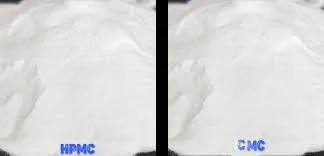
11월 . 13, 2024 18:05 Back to list
hydroxyalkyl cellulose
Hydroxyalkyl Cellulose A Versatile Polymer for Modern Applications
Hydroxyalkyl cellulose (HAC) is a non-ionic, water-soluble polymer derived from natural cellulose, a major component of plant cell walls. By substituting hydroxyl groups on the cellulose structure with hydroxyalkyl groups, such as hydroxyethyl or hydroxypropyl groups, HAC retains the fundamental properties of cellulose while imparting enhanced solubility and functional properties. This unique combination has paved the way for its wide-ranging applications in various industries, including pharmaceuticals, cosmetics, food, and construction.
One of the most significant features of hydroxyalkyl cellulose is its ability to act as a thickening agent. In the pharmaceutical industry, HAC is often used in the formulation of gels and creams, where it provides the necessary viscosity and stability. It also serves as a binder in tablet formulations, ensuring uniformity and improving the flow properties of powders. The addition of HAC to pharmaceutical preparations enhances drug release profiles and bioavailability, making it an essential component in modern drug delivery systems.
In the cosmetics sector, hydroxyalkyl cellulose is prized for its ability to modify the texture and feel of products. It acts as a stabilizer in emulsions, preventing the separation of oil and water phases, thereby improving product consistency. Additionally, HAC enhances the sensory attributes of cosmetic products by providing a smooth application and a pleasant after-feel on the skin. Its film-forming properties also contribute to the longevity of makeup products, ensuring that they remain intact throughout the day.
The food industry has also recognized the benefits of hydroxyalkyl cellulose
. It is commonly used as a food thickener, stabilizer, and emulsifier, improving the texture and mouthfeel of various food products. HAC is particularly valuable in gluten-free formulations, helping to mimic the textural properties of gluten and providing improved consistency in baked goods. Moreover, as a soluble dietary fiber, hydroxyalkyl cellulose can enhance the nutritional profile of products while promoting digestive health.hydroxyalkyl cellulose

In construction, hydroxyalkyl cellulose plays a pivotal role as an additive in cement-based materials. It improves the workability and water retention of mortars and plasters, enhancing their performance and durability. This property is particularly vital in ensuring that construction materials remain workable for longer periods, facilitating easier application. With the growing trend towards sustainable construction practices, the use of bio-based materials like HAC is becoming increasingly important, as it aligns with eco-friendly initiatives.
Hydroxyalkyl cellulose is also noteworthy for its environmental compatibility. Being derived from renewable resources, it serves as a sustainable alternative to synthetic polymers. Moreover, it is biodegradable, thus minimizing its environmental impact. As industries increasingly embrace sustainability, HAC stands out as a polymer that balances performance with environmental responsibility.
Despite its numerous advantages, the production and application of hydroxyalkyl cellulose are not without challenges. Variations in its molecular weight and degree of substitution can lead to differing properties, which must be carefully controlled during manufacturing. Additionally, the regulatory framework surrounding its use in consumable products, particularly in food and pharmaceuticals, requires stringent adherence to safety and quality standards.
In conclusion, hydroxyalkyl cellulose is a multifaceted polymer that has garnered attention across various industries due to its unique properties and functionalities. From enhancing the performance of pharmaceuticals and cosmetics to improving food texture and contributing to sustainable construction practices, HAC demonstrates the versatility and adaptability of cellulose derivatives. As research continues to explore new applications and formulations, hydroxyalkyl cellulose is poised to play an even more prominent role in addressing the challenges of modern materials science and consumer demands.
-
Unlocking the Benefits of HPMC Products: A Gateway to Versatile Applications
NewsAug.07,2025
-
Tile Bonding Cellulose: The Key to Superior Adhesion and Durability
NewsAug.07,2025
-
Hydroxypropyl Methylcellulose Powder: The Versatile Component in Modern Pharmaceuticals
NewsAug.07,2025
-
Hydroxyethyl Cellulose: The Versatile Solution for Various Industries
NewsAug.07,2025
-
Hydroxyethyl Cellulose (HEC): The Versatile Polymer for Various Applications
NewsAug.07,2025
-
The Ultimate Guide to Mortar Bonding Agent
NewsAug.06,2025







